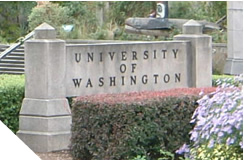|
Biology for Engineers:
Learning at the Engineering/Life Science Boundary
 Project Vision Project Vision
 |
|
Life science is in a dynamic transition from a descriptive and reductionist discipline to a fundamentally predictive science. This revolution has been fueled in part by the availability of genome sequences, and in part by the growing application of cutting-edge technology to basic biological problems. The future seems very likely to bring about a functional understanding of myriad complex biological outcomes, with the resultant ability to predict and correct imbalances that affect heath and the environment. Can there be a more exciting and stimulating time to enter this discipline? In order to achieve the challenging goals that lie ahead, it is essential that rapid progress be made at the interface between basic life sciences research and novel emerging technology including information technology, nanotechnology, and microelectromechanical systems (MEMS).
This opportunity has created a pressing need to attract outstanding undergraduates of diverse backgrounds to the life sciences/engineering boundary, and to create engaging, hands-on educational programs that will engender excitement and foster dedication to careers in this area. Many universities (including the University of Washington) have active programs in Bioengineering, which are an important element in achieving this goal. However, by themselves they are not sufficient. We also need to attract students in other disciplines to the life sciences/engineering boundary. This multi-pronged approach will ensure that the life sciences/engineering interface grows in a robust fashion, with both breadth and depth.
 Project Objectives Project Objectives
The program envisioned for this HHMI initiative will attract outstanding engineering students to a pathway within their majors that incorporates inquiry-based life sciences education into their engineering curriculum. The elements of this proposal include:
- Development of life sciences-oriented pathways within each engineering major. This activity will attract a diverse group of outstanding students into life sciences-oriented engineering pathways within existing majors.
- Development of curricular enhancements. This activity will enhance and expand existing programs at UW to integrate enquiry-based life sciences education into the engineering curriculum. This will engage interest and provide the educational platform for engineering students to gain admission to more advanced coursework and to undergraduate research projects.
- Creation of a program for undergraduate research projects focused at the life sciences/engineering boundary. This activity will facilitate undergraduate research in this area and provide a supportive environment for students carrying out undergraduate research in this area.
 Funding Agencies Funding Agencies
Howard Hughes Medical Institute
National Science Foundation
|




